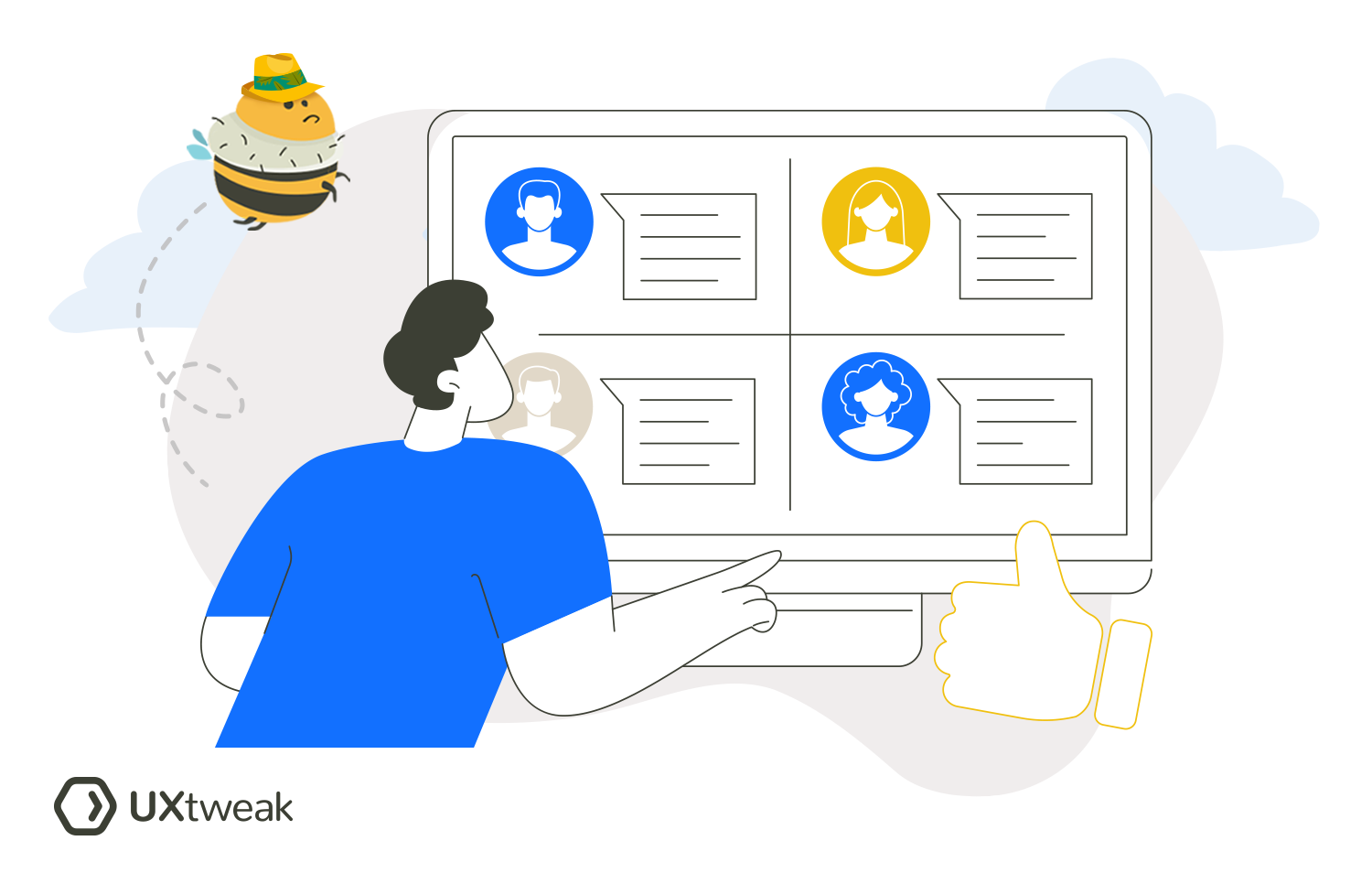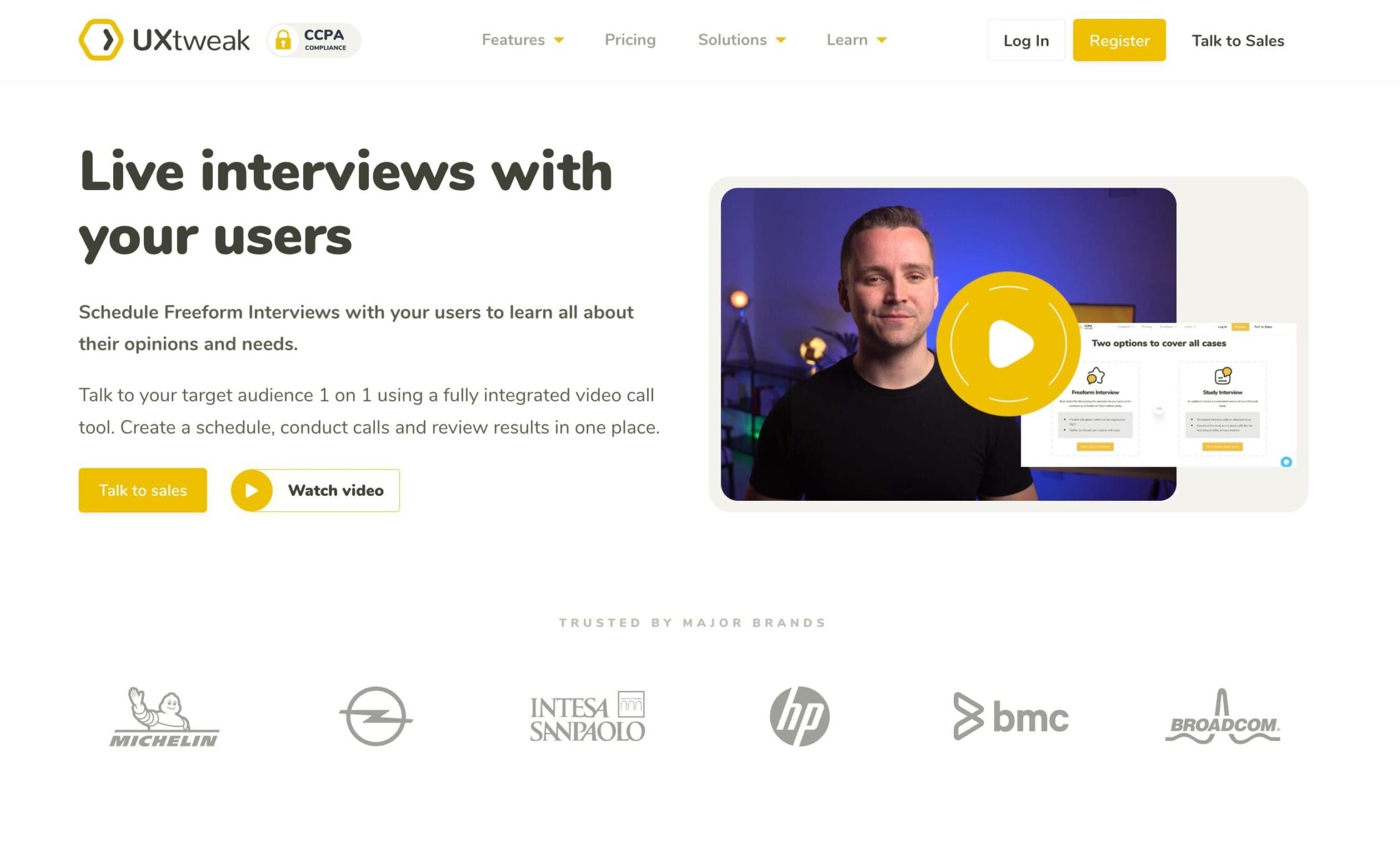User interviews are the ultimate method for gathering qualitative data about your users. And like any other research activity, it needs thorough preparation. In order to make sure your interview goes the best way possible, you need to take the time and create a user interview plan to follow.
Let’s dive into the specifics of such a plan, what it should include, and how to write it!
What is a user interview plan?
A user interview plan is a structured framework designed to guide the process of conducting user interviews. It outlines the goals, objectives, methodology, and logistics of the interviews.
A user interview plan also includes an interview guide or a script, which outlines the topics you’re going to cover during the conversation, as well as specific questions. Whether you choose to follow a script or a guide depends on the type of user interviews you’re planning.
In structured interviews, a script typically accompanies the process, whereas semi-structured and unstructured interviews involve the use of a guide. Let’s take a look at the difference between the two.
Interview guide vs. script
An interview guide is a document that outlines the topics you’re planning to cover and the general flow of the conversation. It gives a much-needed structure but also leaves enough space for improvisation and allows to adapt the interview to the participant’s responses.
Interview guides typically include open-ended questions that encourage participants to share their thoughts and experiences. In some cases it may also incorporate probing techniques to help the interviewer explore specific areas in more detail.
An interview script, on the other hand, is a more rigid document that outlines exact questions and responses for the interviewer to follow. It leaves little room for deviation and tends to be more suitable for standardized research, such as usability testing with predefined tasks and criteria.
💡 To write a good interview script, make sure you formulate user interview questions correctly. You can learn how to do so by watching our video guide:
While scripts ensure consistency across interviews, they may hinder natural conversation and limit the exploration of unexpected insights.
How to create a user interview plan?

1. Set your goals & methods
Firstly, you need to set your goals and methods. You need a clear understanding of what you want to achieve through the interview. Are you looking to gather initial insights or delve deeper into specific topics?
By outlining the goals, you’ll be able to understand which type of user interview will be best in that case and be able to prepare for it properly.
Also, consider the research methods you’ll employ. Maybe you just need to conduct a couple of interviews with users, or run a moderated version of some other research method, like usability testing or card sorting, for example.
2. Prepare user interview questions
Preparing user interview questions requires a strategic approach. We recommend using the funnel technique here. Start with broader, open-ended questions to encourage participants to share their thoughts freely. Then, gradually move towards more specific, closed questions to gather detailed insights.
Additionally, consider the types of questions you’ll ask, such as exploratory questions to understand user behaviors and preference-related questions to uncover their needs and desires.
Learn about the different types of user interview questions and how to write them.
3. Create a user persona
In order to build more empathy and understanding towards your users you need to paint a vivid picture of your target audience. And you can do this by creating user personas.
This step requires defining the criteria of the users you want to gather information from. It’s essential to understand who your users are, what motivates them, and what challenges they face.
This understanding helps in setting the right screening criteria and crafting relevant questions. Additionally, decide how many participants you need and prioritize the creation of user personas, focusing on the most critical ones for your project. You can create up to 4 personas, 1 being the priority.
4. Interviews schedule and timeline
Once you have a clear direction, it’s time to schedule interviews and establish timelines. Keep your deadlines in mind and define how much time you need to collect all the feedback and to analyze it.
Make sure to allocate enough time for each interview, but avoid overloading participants with too many questions in one session.
If you’re doing multiple interviews in one day, make sure to book slots with enough time in between user sessions. This way you can leave space for unexpectedly long conversations and give yourself some time to refocus before the next session.
5. Choose a user interview tool
Choosing the right user interview platform is crucial for ensuring an successful interview. Identify the features you require, such as screen sharing, note-taking capabilities, and support for multiple observers.
The tool should align with your research objectives and facilitate smooth communication and data recording during the interviews.
6. User interview guide
Decide whether you want to follow a script or you want to create a guide that moderators will use during the interview. Each approach has its benefits, so choose the one that best suits your research goals and participant dynamics.
User interview plan template
🔍 Goals & methods | - What are the objectives of the interview? |
❓ User interview questions | - Apply the funnel technique to question preparation. |
👥 User personas | - Have we defined the criteria for our target audience? |
⏳ Interviews schedule and timeline | - Schedule interviews according to project deadlines. |
⚙️ User interview tool | - What features do we require in our user interview tool? |
✍️ User interview structure | - Have we decided on a scripted or flexible guide for moderators? |
Grab your PDF copy of the template ➡️ User Interviews Plan Template
Conduct your first user interview today
So what’s next, you may ask? Well, we hope that the information above was helpful and by getting this far in this guide, you’re now ready to conduct your own user interviews.
And UXtweak is here to help you with that!



